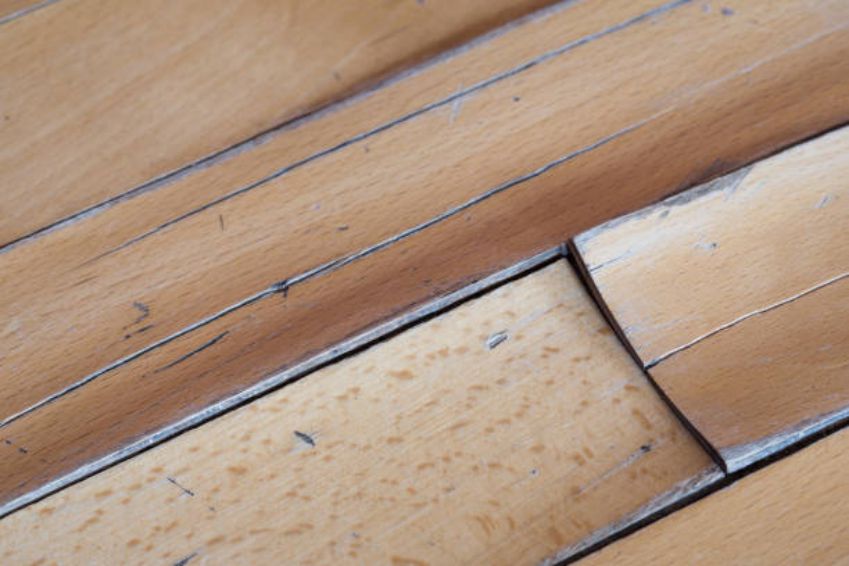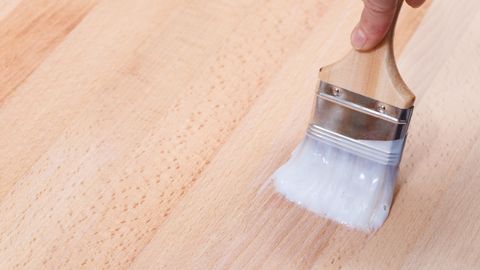Imagine this: A beautiful new home with perfectly pristine laminate flooring. Then, disaster strikes – a spilled paint can leaves a stubborn stain. You reach for the paint thinner, ready to tackle the mess, but hold on! Before you unleash the power of this chemical, there’s a crucial question to consider: Is paint thinner safe for your laminate flooring?

Image: reuplitly.com
The answer, unfortunately, is a resounding no. Paint thinner, despite its name, is a powerful solvent designed to dissolve paint, and its aggressive nature can wreak havoc on laminate floors. While it might seem like a quick fix, using paint thinner could leave your flooring damaged, dull, and potentially unsafe. This article dives deep into the dangers of using paint thinner on laminate flooring, providing you with the knowledge to make informed decisions and protect your home’s beauty.
The Duality of Laminate Flooring
Laminate flooring, a popular choice for its affordability and durability, is a marvel of modern engineering. It’s crafted from layers of materials, including a wear-resistant surface layer, a decorative layer showcasing the “wood” pattern, and a core layer for stability. But while its layers provide strength, they also expose the flooring to potential vulnerabilities.
The top layer, designed to withstand wear and tear, is typically made of melamine or acrylic resin. These materials, while resilient, can be susceptible to chemical damage. Paint thinner, with its potent solvent properties, can dissolve these protective layers, leaving your laminate flooring dull, discolored, and vulnerable to further damage.
The Risks of Paint Thinner on Laminate Flooring
The risks of using paint thinner on laminate flooring are not to be taken lightly. Here’s a closer look at why paint thinner is a definite no-go:
-
Dullness and Discoloration: The aggressive chemicals in paint thinner can strip away the protective layer of laminate flooring, leaving it dull and faded. This effect is particularly noticeable on lighter-colored laminates.
-
Warpage and Buckling: Paint thinner can penetrate the laminate’s core layer, causing it to swell and warp. This can lead to uneven surfaces, making your flooring unsafe to walk on.
-
Unpleasant Odor: Paint thinner has a strong, pungent odor that can linger in your home for days. This persistent odor can be irritating and unpleasant, making your home uncomfortable.
-
Health Hazards: Paint thinner contains volatile organic compounds (VOCs) that can be harmful to your health. Inhaling paint thinner fumes can cause headaches, dizziness, nausea, and even respiratory problems.
Understanding the Science of Laminate Floors and Solvents
To understand why paint thinner is disastrous for laminate flooring, we need to delve into the science at play. Laminate flooring is typically made from several layers pressed together under high pressure. These layers form a composite structure, providing the flooring’s unique characteristics. When exposed to solvents like paint thinner, the bonding between these layers can be compromised. The solvent can seep into the core layer, causing it to swell and distort, leading to warping and buckling.

Image: www.homebuilding.co.uk
Safe Alternatives for Cleaning Laminate Flooring
So, what should you do when faced with a stubborn stain on your laminate flooring? Fear not! There are safe and effective alternatives to paint thinner:
-
Mild Dish Soap and Water: This classic cleaning solution is often enough to remove light stains. Simply mix a few drops of dish soap with warm water, apply to the stain, scrub gently with a soft-bristled brush, and rinse thoroughly.
-
Baking Soda Paste: For tougher stains, mix baking soda with a small amount of water to create a paste. Apply the paste to the stain, let it sit for a few minutes, and then scrub gently. Finally, rinse the affected area thoroughly.
-
Commercial Laminate Flooring Cleaners: The market offers a plethora of commercial cleaners specifically designed for laminate flooring. These cleaners are formulated to be safe on laminate surfaces while effectively removing stains and dirt.
A Word of Wisdom from Experienced Professionals
Remember, when it comes to cleaning your laminate flooring, it’s always best to err on the side of caution. Avoid abrasive cleaners, strong chemicals, and anything that could potentially damage the surface. If you are unsure about a specific cleaning agent, consult the manufacturer’s instructions or a professional floor cleaning specialist.
Preventing Laminate Flooring Damage: A Guide to Protection
The best way to keep your laminate flooring looking its best is to prevent damage in the first place. Here are some tips to protect your investment:
-
Use Protective Mats: Place mats in high-traffic areas, such as entrances and under furniture, to reduce wear and tear.
-
Promptly Clean Spills: Wipe up spills immediately to minimize the risk of staining or damage.
-
Avoid Harsh Chemicals: Stick to mild cleaners specifically designed for laminate flooring.
-
Regular Maintenance: Sweep or vacuum your laminate flooring regularly to remove dust and debris.
Can You Use Paint Thinner On Laminate Flooring
The Conclusion: Embrace a Safer Cleaning Strategy
Using paint thinner on laminate flooring is a dangerous gamble that could lead to irreversible damage to your floors. It’s crucial to understand the potential risks and utilize safe alternatives for cleaning. By prioritizing a cautious and responsible approach, you can ensure that your laminate flooring remains beautiful and durable for many years to come. Embrace the wisdom of this article, protect your flooring, and enjoy a safe and comfortable home environment.






